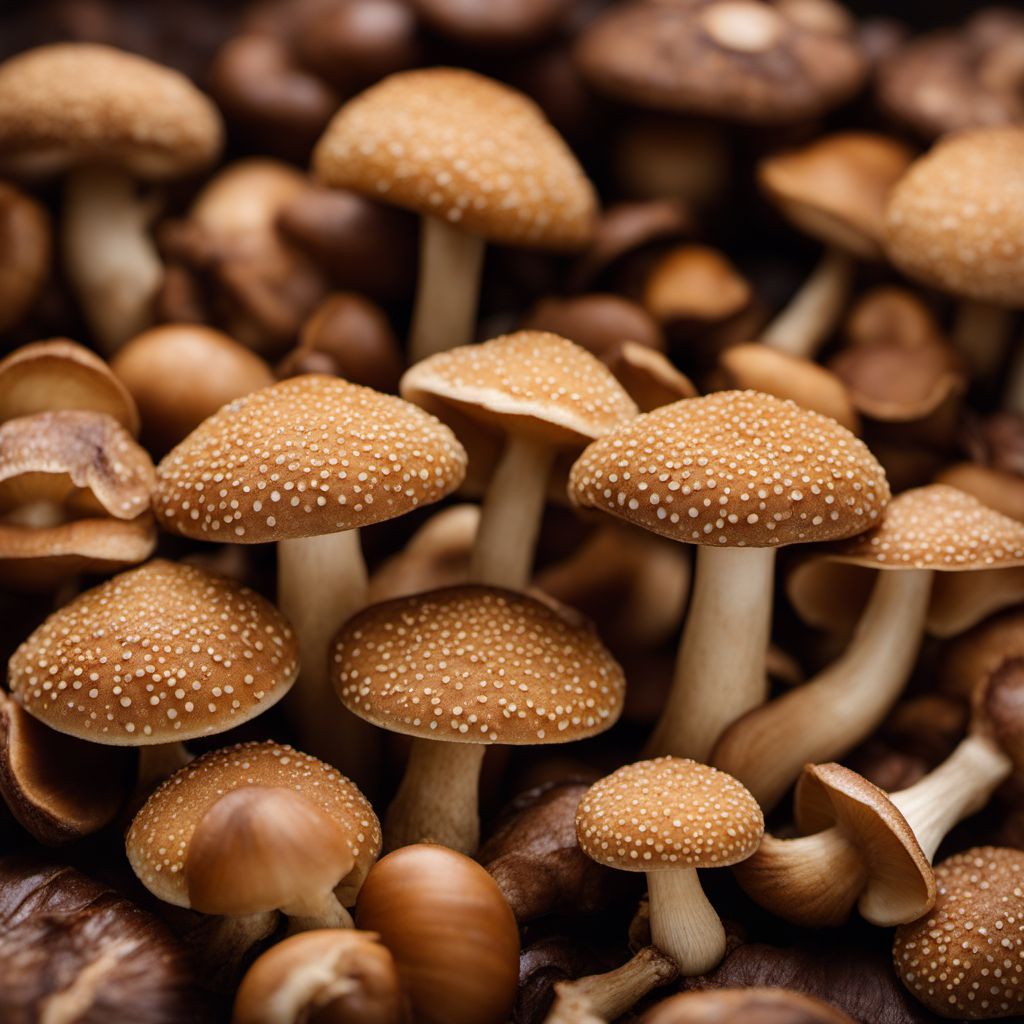
Ingredient
Shiitake
The Mighty Shiitake
Shiitake mushrooms are known for their meaty texture, earthy flavor, and distinctive umbrella-shaped caps. They have a smooth, tan to dark brown surface with white gills underneath. These mushrooms are widely used in Asian cuisine and are prized for their rich umami taste.
Origins and history
Shiitake mushrooms have a long history dating back thousands of years in East Asia, particularly in China and Japan. They were traditionally used for their medicinal properties and were considered a symbol of longevity and good health. Today, shiitake mushrooms are cultivated worldwide and are an essential ingredient in many Asian dishes.
Nutritional information
Shiitake mushrooms are low in calories and fat, while being a good source of fiber, vitamins, and minerals. They are particularly rich in B vitamins, copper, selenium, and zinc.
Allergens
Shiitake mushrooms may cause allergic reactions in some individuals, especially those with mushroom allergies. It is advisable to exercise caution and consult a healthcare professional if you have any concerns.
How to select
When selecting shiitake mushrooms, look for firm caps with a smooth surface and avoid any that appear slimy or have a strong odor. Fresh shiitake mushrooms should have a slightly sweet aroma. Additionally, choose mushrooms with unblemished caps and avoid those with dried or cracked edges.
Storage recommendations
To store shiitake mushrooms, place them in a paper bag or wrap them in a paper towel to absorb excess moisture. Keep them in the refrigerator's vegetable drawer, where they can stay fresh for up to a week. Avoid storing them in plastic bags as they can become slimy.
How to produce
Shiitake mushrooms can be grown at home by purchasing spawn or mycelium and inoculating logs or substrate. They require a specific temperature and humidity range for optimal growth, making them suitable for more experienced home growers.
Preparation tips
Shiitake mushrooms can be used in a variety of dishes, including stir-fries, soups, stews, and sauces. They can be sautéed, grilled, roasted, or even dried for later use. To enhance their flavor, remove the tough stems before cooking and slice the caps into desired sizes.
Substitutions
Oyster mushrooms can be used as a substitute for shiitake mushrooms, as they have a similar texture and mild flavor. However, they lack the distinct umami taste of shiitake mushrooms.
Culinary uses
Shiitake mushrooms are commonly used in Asian cuisines, such as Chinese, Japanese, and Korean. They are often added to stir-fries, noodle dishes, hot pots, and soups to impart their unique flavor and texture. They are also popular in vegetarian and vegan dishes as a meat substitute.
Availability
Shiitake mushrooms are widely available in Asia, particularly in China, Japan, and Korea. They are also cultivated and consumed in various other countries, including the United States, Canada, and Europe.
More ingredients from this category » Browse all

Enokitake
The Delicate Beauty of Enokitake Mushrooms

Pom-pom blancs
The Delicate Delight: Exploring the World of Pom-pom Blancs
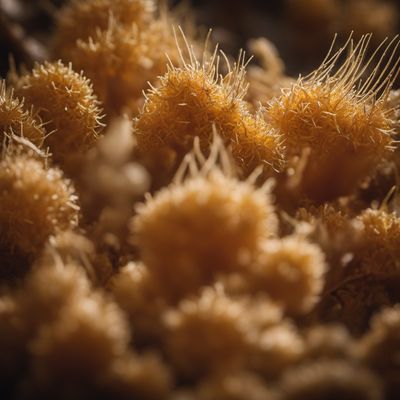
Fusarium venenatum
The Fungal Protein: Fusarium Venenatum

Other cultivated fungi
Exquisite Edible Fungi

Horse mushrooms
The Majestic Fungi of the Earth

Snow mushrooms
The Delicate Beauties of the Forest

Wood blewits
The Enigmatic Wood Blewits: A Hidden Gem in the Culinary World

Shimeji
The Delicate Mushroom: Shimeji

Common mushrooms
The Versatile Fungi

Paddy straw mushroom
The Golden Fungi

Nameko
The Versatile Mushroom

Jew's ears
Nature's Edible Fungi: Unveiling the Secrets of Jew's Ears
Recipes using Shiitake » Browse all

Chinese Imperial Calentado
Imperial Harmony: A Fusion of Colombian Calentado and Chinese Imperial Cuisine

Beijing-style Steamed Dumplings
Savory Steamed Delights: Beijing-style Dumplings

Chawanmushi with a Twist
Silken Delight: A Modern Twist on Chawanmushi
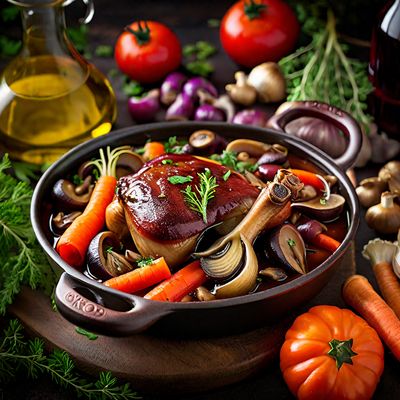
Vegetarian Coq au Vin
Savory Mushroom Stew: Vegetarian Coq au Vin

Japanese-style Beef Bourguignon
Sakura Beef Bourguignon

Hubei-style Meitschibei
Savory Hubei Delight: Meitschibei with a Local Twist
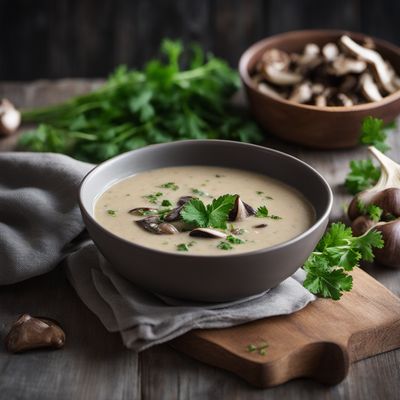
Creamy Mushroom Soup
Savory Delight: Creamy Mushroom Soup with a Northern European Twist

Japanese-style Pierogi
Sakura Dumplings: A Fusion of Polish and Japanese Flavors
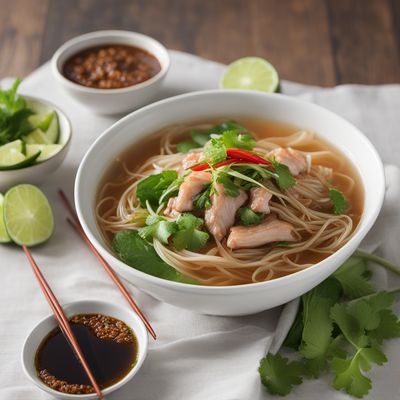
Chim Chum - Thai Hot Pot Delight
Fiery Delights: Exploring the Flavors of Chim Chum
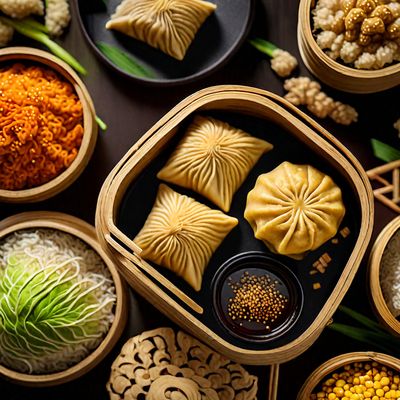
Vegan Dim Sum
Plant-Based Delights: Vegan Dim Sum

Spicy Pork Bone Stew
Fiery Delight: Spicy Pork Bone Stew - A Hearty Korean Delicacy

Chinese-style Coq au Vin
Soy-Glazed Chicken Stew with Mushrooms and Red Wine